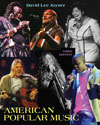Listening Guide 4.1 Listening Guide 4.2
Listening Guide 4.1
"Maple Leaf Rag" 2 beats per measure iTune link = Maple Leaf Rag | Elapsed Time | Form | Event Description | | 0:00 | A | Piano (16 measures: 8 1 8) | | 0:23 | A | (16 measures 8 1 8) | | 0:45 | B | (16 measures) | | 1:07 | B | (16 measures) | | 1:30 | A | (16 measures) | | 1:52 | C | New key (16 measures) | | 2:14 | C | (16 measures) | | 2:37 | D | Back to original key (16 measures) | | 2:59 | D | (16 measures) | | 3:21 | End | |
Analysis of "Maple Leaf Rag" (SCCJ, 1/1) This recording of "Maple Leaf Rag" features a player piano roll of a performance by Scott Joplin himself. He performed the rag on a special piano that placed dotted marking on the paper, which was punched out later and duplicated. The roll was made in 1916 when Joplin was suffering from the effects of syphilis, one being the gradual loss of his motor ability. For this reason, the piano roll performance is rather stiff and clumsy, but we can still see how Joplin would interpret his most famous piano rag.
"Maple Leaf Rag," like all rags, is a multithematic form; that is, it is a composition made up of a succession of three or four melodic sections. It shares this form with the march, its primary model. (Listen, for instance, to John Philip Sousa's "Stars and Stripes Forever" and note its three distinct themes.) "Maple Leaf Rag" has four themes, and like the march and other rags it changes key after the second theme.
The rhythmic relationship between the left and right hand is typical of all rags. The left hand alternates an even bass/chord accompaniment to the syncopated melody in the right hand (see Figure 4.1).
The concept of this compositional form and texture would provide the basis for many rag and jazz compositions and performances until around 1930.
It is interesting to note that Joplin does not play "Maple Leaf Rag" note for note from the printed music. His use of improvisation is minimal, with just a few embellishments. It was a common practice for piano roll editors to add extra notes to "live" performances to give the piano a bigger, orchestral sound. Ragtime researchers and interviews with Joplin's contemporaries have confirmed that this type of improvisatory embellishment was also a common practice in ragtime.
Listening Guide 4.2
"St. Louis Blues" 4 beats per measure iTune link = St. Louis Blues | Elapsed Time | Form | Event Description | | 0:00 | Intro | Organ chord followed by trumpet | | 0:03 | A1 | Vocal with trumpet fills (12 measures) | | 0:49 | A2 | Vocal with trumpet fills (12 measures) | | 1:33 | B | Vocal, shift to minor key (16 measures) | | 2:29 | C | Vocal, back to major key (12 measures) | | 3:10 | End | |
Analysis of "St. Louis Blues" (SCCJ, 1/3) This recording is by the greatest of the classic blues singers, Bessie Smith. It was made in 1925 and features W. C. Handy's most popular published blues song, "St. Louis Blues." This session is of particular interest because Smith is accompanied by a young Louis Armstrong on trumpet. As we shall see in Chapter 7, Armstrong was a consummate interpreter of the blues, as a vocalist and as an instrumentalist. He posed somewhat of a threat to Bessie Smith's performance, with a wonderful musical rivalry being captured on the recording.
The other instrument on the record is a reed pump organ played by Fred Longshaw. Even though these urban blues recordings were slicker in their production than recordings of folk blues artists, there were occasional attempts made to capture a rustic, down-home sound; hence the pump organ, creating the image of the old country church. Other classic blues singers, such as Gertrude "Ma" Rainey, occasionally sang to a jug band, where the musicians hummed through kazoos, blew into glass jugs, and scraped on washboards.
Bessie Smith's voice is robust and powerful, well suited for the acoustic method used for this recording. While the range of her voice rarely exceeds an octave, her command of blues vocal mannerisms more than compensates. On this particular recording listen for the exaggerated blue notes in the melody. In most cases a blue note is a result of the singer sliding into or out of a particular note. Armstrong matches her blues inflections with his trumpet note for note.
Handy's "St. Louis Blues" is actually a formal blend of ragtime, verse/chorus song, and 12-bar blues. There are three distinct melodic themes in this song. The first is a 12-bar blues form. The second theme is a 16-bar bar in a minor key; in the original sheet music, a tango rhythm was written in the accompaniment. The third theme is a 12-bar blues form with a repetitive bluesy melody dominating it.
|



 2009 McGraw-Hill Higher Education
2009 McGraw-Hill Higher Education